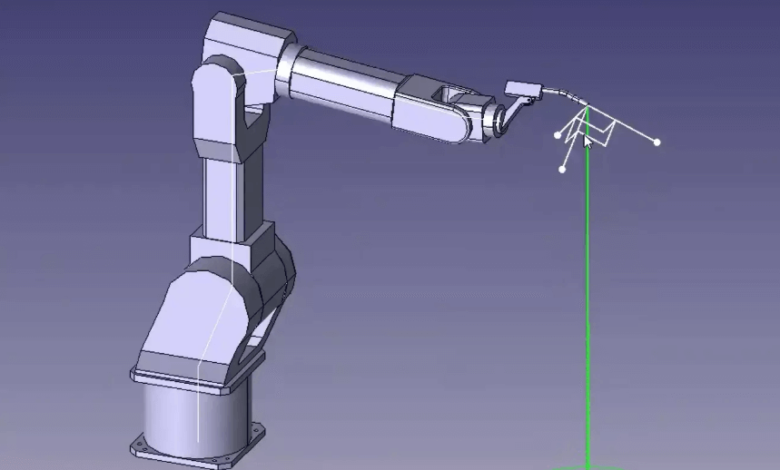Parametric Solver: A Tool for Precision and Flexibility

Understanding Parametric Equations
For example:
- x(t) = t²
- y(t) = 2t + 1
These forms are particularly useful for modeling curves that can’t be represented by a single equation in x and y. Solving such equations manually can be time-consuming and prone to error—this is where a parametric solver becomes invaluable.
What Is a Parametric Solver?
A parametric solver is a mathematical tool or calculator designed to handle problems involving parametric equations. It allows users to input parametric forms and instantly compute outputs like values, derivatives, integrals, or visual graphs. Some parametric solver are part of larger graphing software or computer algebra systems, while others exist as standalone tools available online.
Benefits of Using a Parametric Solver
The advantages of using a parametric solver are numerous and extend across different levels of education and fields of work.
Fast Computation
A parametric solver automates complex calculations that would otherwise require several steps of algebraic manipulation or calculus. This speeds up homework, research, and design tasks.
Visualization
Many solvers come with graphing capabilities, enabling users to visualize curves and understand their behavior more intuitively.
See also: Exploring the Creative Potential of AI Video Generator Technology
How It Works
Using a parametric solver generally involves a few simple steps:
- Input the Parametric Equations: You define x(t) and y(t) or more variables in case of 3D curves.
- Set the Parameter Range: Choose how t should vary, for example, from -10 to 10 or 0 to 2π.
- Specify Output Needs: Depending on the solver, you may request evaluations, derivatives, integrals, or plots.
- View Results: The solver will provide outputs in numerical, algebraic, or graphical form.
Applications in Education
In educational environments, parametric solvers are a great resource for both students and teachers. Here’s how:
High School Level
At the high school level, learners are introduced to parametric equations in advanced algebra or pre-calculus courses. A parametric solver helps them experiment with different equations and immediately see the results, enhancing comprehension.
Use in Engineering and Physics
Engineers often model systems involving motion, such as mechanical arms, projectiles, and fluid dynamics. In these systems, variables change with time, making parametric equations the natural choice.
A parametric solver simplifies these applications by:
- Providing accurate trajectories
- Calculating derivatives to measure velocity and acceleration
- Graphing real-time changes
- Evaluating performance under varying inputs
Similarly, in physics, parametric solvers are used to model orbits, waves, and kinematic equations. By defining position as a function of time, complex systems can be broken down into understandable and solvable parts.
Advanced Features of Parametric Solvers
While basic solvers can graph and evaluate, more advanced versions offer an expanded feature set:
Symbolic Solutions
Some solvers use symbolic computation to deliver exact expressions, not just numerical approximations.
Conversions
They may also convert parametric equations into Cartesian form, allowing users to cross-check solutions or better understand underlying geometry.
Custom Parameters
Multiple parameters such as t and s may be used to represent surfaces, making solvers valuable in surface modeling and 3D printing design.
A Practical Example
Given:
- x(t) = 3t + 2
- y(t) = 2t²
Goal:
Find the position of the point at t = 4, and determine the slope at that point.
Step 1: Input
Enter the functions into the parametric solver.
Step 2: Evaluate at t = 4
- x(4) = 3(4) + 2 = 14
- y(4) = 2(16) = 32
Step 3: Derivatives
- dx/dt = 3
- dy/dt = 4t
At t = 4, dy/dt = 16
The parametric solver delivers these values instantly, complete with optional graphs.
Comparing Popular Parametric Solvers
Several platforms offer parametric solving tools, each with strengths:
Desmos
An excellent choice for interactive graphing. Ideal for students and teachers.
GeoGebra
Best for classroom use, with built-in educational activities.
Wolfram Alpha
Great for symbolic solutions and academic research.
Symbolab
Provides step-by-step explanations, ideal for homework help.
Integrating Parametric Solvers in Workflow
For professionals and researchers, integrating a parametric solver into their daily workflow improves productivity and decision-making. Whether designing a new part, simulating an experiment, or developing game motion paths, parametric solvers remove the manual complexity and let you focus on outcomes.
Developers can even embed solver capabilities in custom software or simulations, allowing for real-time data-driven design and adjustment.
Future of Parametric Tools
As artificial intelligence and machine learning become more integrated into mathematical tools, we can expect parametric solvers to become more predictive and adaptive. Future versions may suggest parameter ranges, optimize curves for certain constraints, or even model real-time motion using sensor inputs.
This evolution will make them even more powerful for education, simulation, and design.
Conclusion
A parametric solver is more than just a calculator—it’s a versatile assistant for solving, visualizing, and understanding parametric equations. Whether you’re a student tackling calculus problems or a professional modeling motion and change, this tool provides the accuracy, speed, and clarity needed in today’s fast-paced digital environment.
By simplifying the complexities of parametric systems, a parametric solver opens the door to deeper insight, better results, and more creative applications. Investing time in learning and using these tools is not just helpful—it’s essential for success in many modern fields.





